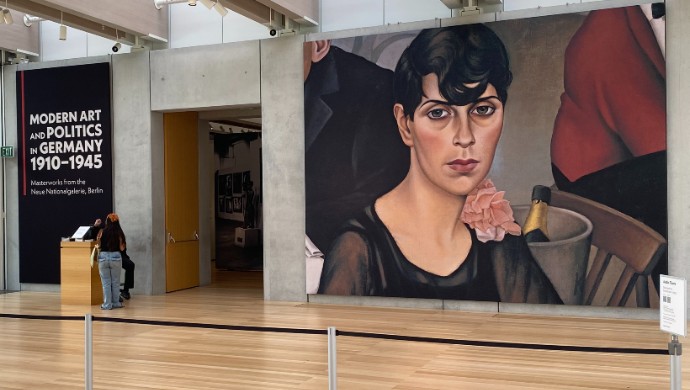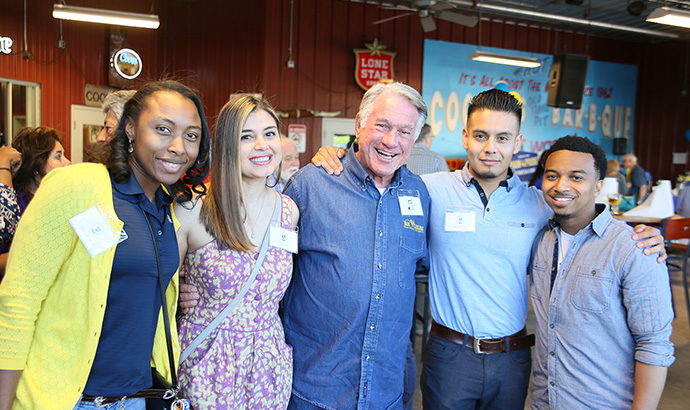Students in Twentieth Century World History Class Visit Kimbell Art Museum

For some, summer is a time for rest, earning extra income, or vacationing, but for the students in HIS 4325 Twentieth Century World History, it's a time to knock out some needed coursework. While summer courses have the same number of contact hours as classes during the Fall and Spring terms, the pace, according to Dr. Christopher Ohan, seems slower. "I think it's because students are just taking one or two classes. There's time to dig deep into course material," he said. That's just what students in his summer history course did when, after studying World War I, the class visited the Kimbell Museum's exhibition "Modern Art and Politics in Germany 1910-1945." The exhibition contains masterworks from the Neue Nationalgalerie, Berlin.
This particular exhibition portrayed in art what is being covered in class—the senselessness of World War I, the mood of disillusion following the war, and the rise of Fascism in the 1930s. The Expressionist style before the war gave way to increasing modes of abstraction after. Works like Alice Lex-Nerlinger's 1932 Field-gray Yields Dividends portrays a German soldier entangled in barbed wire, while George Grosz's 1926 Pillars of Society casts judges, the press, publishers, and the church as caricatures of the rising Nazi party in Germany. One of the more poignant areas of the exhibition was the pairing of Georg Kolbe's 1940 Descending Man bronze sculpture portraying the idealized masculine form preferred by the Nazi regime with Horst Strempel's 1946 Night Over Germany, an altarpiece-like series of images meant to show a reckoning with National Socialism by exposing the crimes committed by the Third Reich.
As was pointed out throughout the exhibition, much of the art on display was officially labeled "degenerate" by the totalitarian Nazi regime as it sought to control all aspects of German society—culture, the press, political associations, and religion. "This exhibition is not only relevant to studying the past, but it also shows the societal scars wrought by war and extreme nationalism," said Ohan, "factors that still influence us today."
For more information about the Texas Wesleyan History Program, visit txwes.edu/history. To experience some of the artistic offerings in the city, check out Visit Fort Worth.








